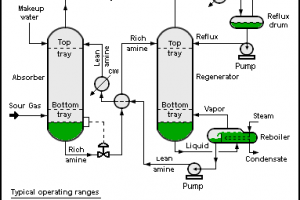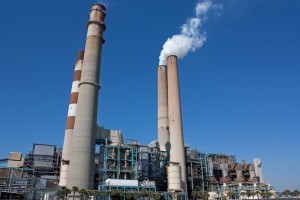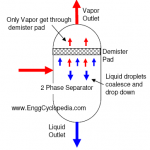Crude oil storage tanks are large containers used to store unrefined petroleum products before they are processed into usable forms such as gasoline, diesel fuel, or other refined products. Crude oil storage tanks are an essential component of the oil and gas industry, as they provide a means for storing crude oil and other petroleum products that can be used to meet demand during periods of high consumption.
Table of content:
Crude oil storage tanks
Floating roof tanks (as compared to fixed roofs) – Pros and Cons
Fixed roof tanks storage
Crude oil storage tanks
Crude oil untreated and unrefined are stored in tanks for shipment to other locations or processing into finished products.
There are four basic types of tanks used to store petroleum products:
(1) Floating Roof Tank used for crude oil, gasoline, and naphtha.
(2) Fixed Roof Tank used for diesel, kerosene, catalytic cracker feedstock, and residual fuel oil
(3) Bullet Tank used for normal butane, propane, and propylene
(4) Spherical Tank used for isobutane and normal butane.
It is to be noted that fixed roof tanks could be used for storing low amounts of crude oil as compared to the million barrels stored in floating roof tanks.
Floating roof tanks (as compared to fixed roofs) – Pros and Cons
Floating roof tanks are advantageous, compared to fixed roof tanks, as it prevents vapour emissions (that are highly combustible) that help eliminate the chances of fire or an internal tank explosion. They are usually used for stable liquids (with no dynamic loads acting, as discussed later).
However, adverse environmental conditions could affect floating roofs as accumulation of snow and rain water could result in roof submersing in the stored liquid. Nonetheless this static load can be incorporated in making assumptions on the response of the roof, which can be further used in the design of the tank with a significant factor of safety.
An area of concern, although, is the dynamic loads that act upon the roof due to constant splashing of water or leaks that result in flooding of roof compartments. This could be partly corrected by having sufficient stiffness in the circumferential direction at the roof, but due to the irregular nature of such loads, it may not be possible to accurately predict its magnitude.
Also, while the liquid exits the tank, the floating roof steadily approaches the bottom leaving behind a wet shell (liquid droplets that are left behind as the level drops). This results in the evaporation of liquid droplets to the atmosphere and is termed as the withdrawal loss, a form of emissions similar to hydrocarbon leaving the fixed roof tanks. A flawless rim seal (closure between the roof and the shell) could impede the loss of liquid but most seals have a loss factor associated to them that is calculated based on tank diameter and wind blowing over the tank.
Another alternative to external floating roofs is an internal roof that combines the concept of conical fixed roof tanks that lie on top of pontoons. They too are affected by the withdrawal and storage losses that are mitigated using similar means. Most recently, engineers have been designing floating roof tanks with secondary seals to mitigate such emissions and prevent any seal friction caused by using tighter seals (a simpler solution to prevent any vapours to exist)
Fixed roof tanks storage
During the process of storing crude oil, light hydrocarbons such as natural gas liquids, volatile organic compounds, hazardous air pollutants and some inert gases, vaporize and collect between the liquid level and the fixed roof tanks. As the liquid level in the tank varies, these gases slowly release out to the atmosphere. A solution to prevent this from occurring is by installing vapour recovery units. These units capture the BTU-rich units for sale or use it onsite as fuel.
Another solution could be the use of foam chambers. These are designed to cover flammable hydrocarbon or water miscible liquids with low expansion foam or fire extinguishment or vapour suppression. The foam occupies the vacant space that was initially filled with air, one of the main sources of combustion, to prevent any potential hazards. They have the advantage over ground based monitors of directing all their foam directly onto the flammable liquid surface regardless of weather conditions.
The foam generator made foam by introducing air into a foam solution stream that was delivered to the top pourer system (TPS) in a variety of ways. The inlet of the TPS is fitted with a venturi jet designed to draw air into the stream through a series of holes located around the foam generator. The foam solution is obtained from mobile foam proportioning equipment located far away from the tank and routed back to it through pipelines.



